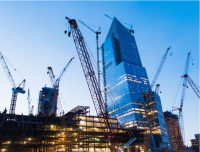
By Tina Fong, Strategist at Schroders
Nearly a year ago, the US economy experienced a textbook recession with two consecutive quarters of negative real GDP. But the rapid rise in inflation suggested an economy facing stagflation rather than recession. On the other hand, the strong US labour market indicated an economy in expansion.
Since then, inflation has fallen but the US economy has proven to more resilient than expected. In particular, the labour market remains relatively robust with the unemployment rate close to multi-decade lows. That said, the unemployment rate has risen, and the Schroders Output Gap model has moved on to the slowdown phase. Like the market, we now expect the US economy to experience a slowdown but not an outright recession.
What does slowdown mean for investing?
Slowdowns have typically been challenging environments for risk assets such as equities and credit bonds. Not only does corporate profitability gets hit by weaker economic activity and demand, but profit margins are also squeezed from higher costs from rising wages and interest rates. Instead, during the slowdown phase, the performance winners have been commodities and government bonds.
Unlike expansion periods when commodities reap the benefits from stronger economic activity, they gain when inflation rises during slowdowns. This is because energy and agriculture commodities feed into the headline CPI rate, and they are sometimes the cause of higher consumer prices.
On the other hand, the performance of government bonds suffers during times of rising inflation. But they tend to outperform equities as investors seem to reach for the safety of this defensive asset during slowdowns.
This slowdown is likely to be different
In the past, inflation has typically risen and peaked during economic slowdowns, as the central bank’s tightening of monetary policy eventually slows growth, causing unemployment to rise and the output gap to shrink. But entering this slowdown phase, we are experiencing a different inflation dynamic than in previous economic cycles as inflation is falling this time around (highlighted by the circle in the chart below).
The root of this unusual inflation dynamic comes from the after-effects of the Covid pandemic in 2020. In particular, the pandemic led to an imbalance between supply and demand for goods, which fuelled inflation to surge last year. This was further exacerbated by the Ukraine-Russia war and China’s zero-Covid policy on supply chains.
So last year, the Schroders Output Gap model was in the expansion phase. But the unusually high levels of inflation prompted more aggressive policy action by the Federal Reserve (Fed), resulting in the largest ever increase in interest rates compared to increases in previous expansion phases. This has resulted in a significant de-rating in the US market, and equities have had one of their worst performing times compared to past expansions when returns have generally been positive.
This slowdown phase may not be as bad
Economic activity in the US is likely to slow over the coming months, but this time around the fall in inflation could create a less challenging landscape for equities. The improvement in the inflation picture reduces the risk of recession and provides the Fed with more flexibility in cutting interest rates.
The average returns of the S&P 500 have tended to be more positive when interest rates have fallen). In contrast, the tightening in monetary policy particularly during the slowdown phase has been poor environments for equities. That said, interest rates have usually reached their peak during slowdowns, and the Fed is either cutting rates or keeping them at unchanged for most of the time.
Meanwhile, slowdown periods followed by expansions rather than recessions tend to be more positive environment for equities. If economic activity turns out to be more resilient, both growth and corporate earnings can recover back to a reflationary setting. Instead, slowdowns that results in recessions are usually environments where there is a significant contraction in growth, which materially hits corporate earnings.
Conclusion
With the US economic cycle now in the slowdown phase, a more cautious stance towards equities and credit markets would typically be suggested. But investors should recognise that this cycle is proving to be rather different, as inflation is falling as we enter the slowdown. This may indicate that growth could be more resilient, and the Fed has greater flexibility to ease monetary policy. It also reduces the risk of a slowdown followed by a recession, which tends to create a more negative environment for risk assets. Overall, the investment playbook based on previous slowdowns may be different this time.
Further reading : click here







